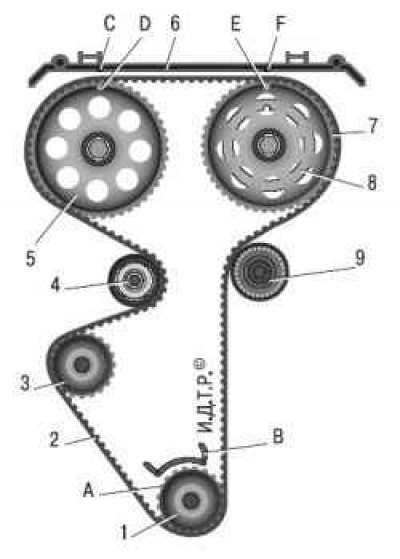
Pic. 5.4. Timing mechanism drive scheme: 1 – a gear pulley of a cranked shaft; 2 - toothed belt; 3 - water pump pulley; 4 - tension roller; 5 – a pulley of a camshaft of final valves; 6 – a back protective cover of a gear belt; 7 – a pulley of a camshaft of inlet valves; 8 - ring (sync disk) for the phase sensor; 9 - support roller; A - TDC mark on the crankshaft toothed pulley; B - alignment mark on the cover of the oil pump; C, F - alignment marks on the rear protective cover of the toothed belt; D - alignment mark on the exhaust camshaft pulley; E - alignment mark on the intake camshaft pulley
Camshafts are driven by pulley 1 (pic. 5.4) crankshaft by means of a toothed belt drive. Under the camshaft pulleys there are two rollers: tension 4 on the left, support 9 on the right. At the support roller, the mounting hole is made in the center of the inner cage, at the tension roller it is located eccentrically (off center by 6 mm). Therefore, by turning the tension roller relative to the mounting bolt, you can adjust the belt tension.
The camshaft pulleys differ in that a timing disk 8 is welded to the pulley 7 of the intake camshaft, which ensures the operation of the phase sensor. Front and rear drive is covered with plastic covers.
To set the valve timing, installation marks A, D, E are provided on the pulleys, B on the oil pump cover, as well as C and F on the rear drive belt cover. With correctly installed phases, label A should coincide with label B, and labels D and E - with labels C and F.
Replace the camshaft drive belt if, upon inspection, you find:
- traces of oil on any surface of the belt;
- signs of wear of the toothed surface, cracks, undercuts, folds and delamination of the fabric from the rubber;
- cracks, folds, depressions or bulges on the outer surface of the belt;
- fraying or delamination on the end surfaces of the belt.
You will need: tools needed to remove the alternator drive belt and timing belt front cover, wrench «at 15», box key «at 17», a special wrench for turning the tension roller or a snap ring remover, a mounting spatula or a large screwdriver.
1. Disconnect the wire from the terminal «minus» battery.
2. Remove the alternator drive belt (see «Replacing the alternator drive belt»).
3. Set the piston of the 1st cylinder to the TDC position (see «Setting the piston of the first cylinder to the TDC position of the compression stroke»).
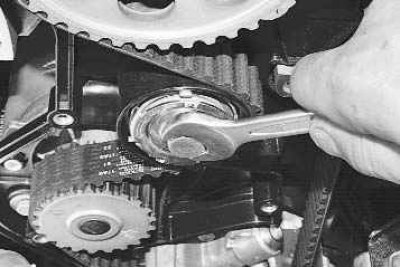
4. Loosen wrench «at 15» tighten the idler pulley mounting bolt and turn the idler pulley to loosen the belt tension.
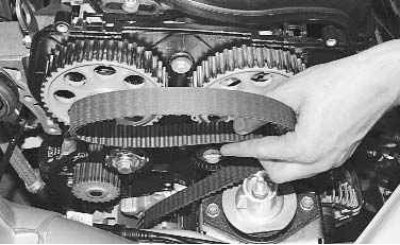
5. Remove the belt from the camshaft pulleys, idler pulley and water pump sprocket.
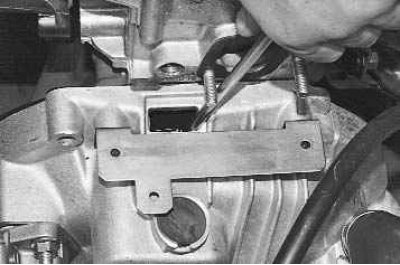
6. In order to unscrew the bolt securing the generator drive pulley, it is necessary to fix the crankshaft from turning. To do this, after removing the plug in the clutch housing, the assistant must use a mounting spatula or a large screwdriver to hold the crankshaft by the teeth of the flywheel crown.
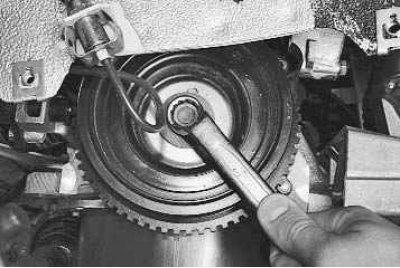
7. Turn out with a ring wrench «at 17» crankshaft pulley bolt..
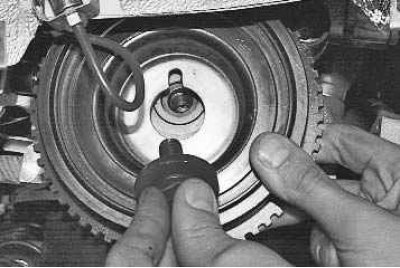
8.... remove it with a washer and remove the alternator drive pulley from the crankshaft.
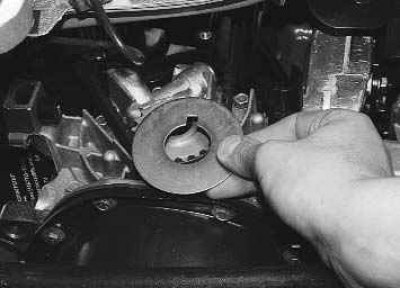
9. Remove the washer from the timing belt drive pulley.
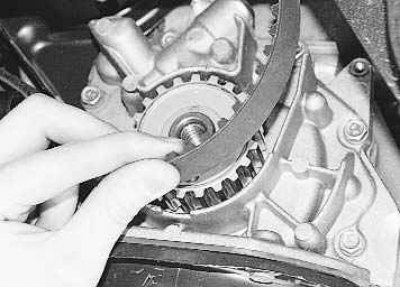
10. Remove the timing belt from the crankshaft sprocket.
11. Before installing a new belt, clean the pulleys and tension roller from dirt and grease, degrease them with white spirit.
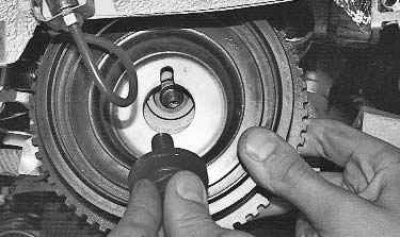
12. Install the camshaft drive belt in the reverse order of removal. The alternator drive pulley is installed in only one position. The groove of the pulley must fall on the tide of the timing drive pulley.
13. When installing the belt, ensure the tension of its leading branch.
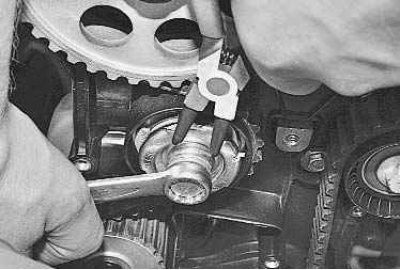
14. After installing the belt, adjust its tension. To do this, use a special key or a snap ring remover inserted into the grooves of the outer disk of the tension roller, turn the roller counterclockwise..
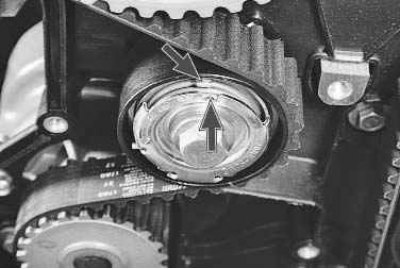
15.... until the notch on the outer disk is aligned with the rectangular protrusion on the inner sleeve of the tension roller. Tighten with a wrench «at 15» tensioning roller bolt with the torque recommended in Appendix 1.
If noise is heard from the camshaft drive belt, it is likely that the idler roller bearing has failed. Remove the roller, check the performance of its bearing. If seizing, axial play or traces of lubricant leakage from the bearing are noticeable when turning the bearing, replace the tension roller.
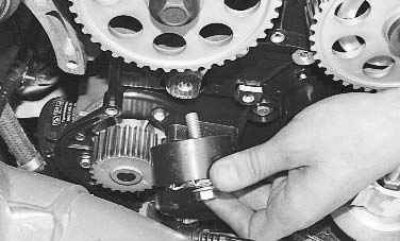
16. To replace the roller before installing the belt, finally unscrew the bolt of its fastening and remove the roller.
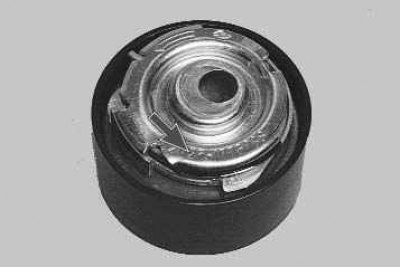
17. Install a new tension roller in the reverse order of removal. In this case, the roller disk with the marking must point outwards.
18. Adjust the tension of the timing belt (see paragraphs. 13–15).
19. Establish all removed details and knots in an order, the return to removal.
